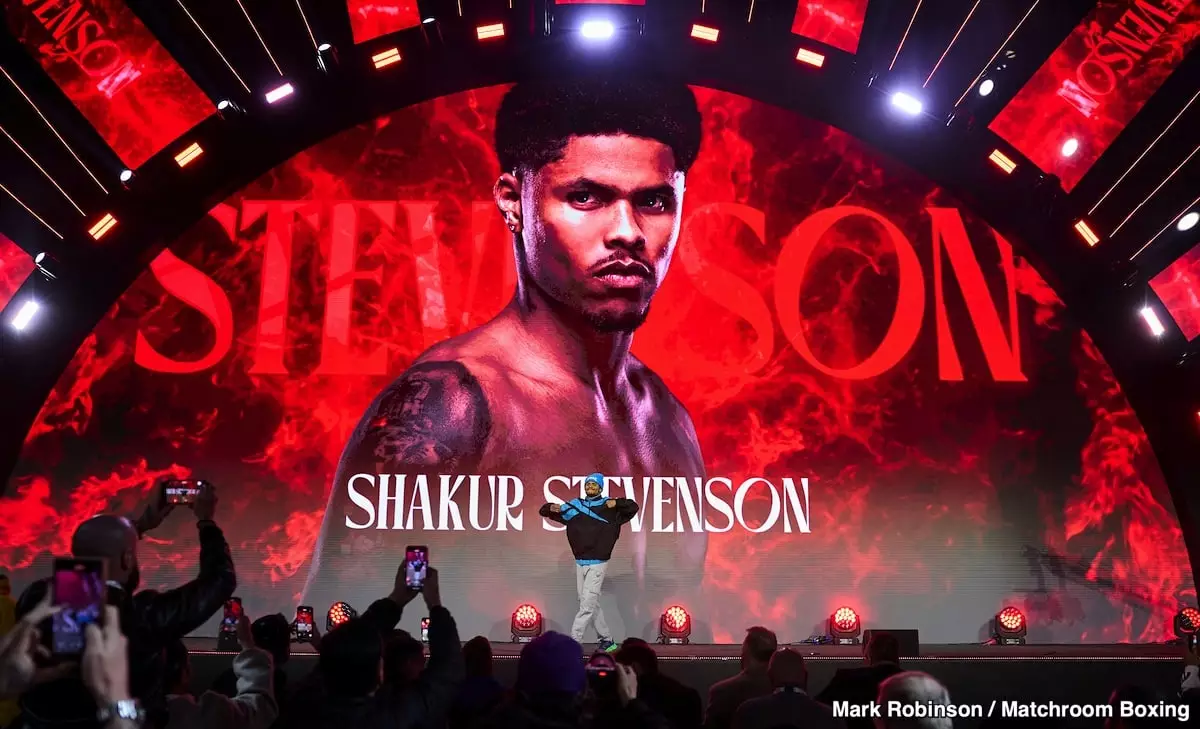In the fast-paced world of professional boxing, the journey to a championship belt is often paved with unmet expectations and unfulfilled aspirations. For Shakur Stevenson, his ambition to secure a fight against Vasily Lomachenko embodies a profound sense of disappointment. It’s not just about a missed opportunity; it’s about the emotional weight of admiration that Stevenson carries for Lomachenko, a fighter he once looked up to. After moving up to the lightweight division two years ago, Stevenson’s eagerness to challenge the legendary three-division champion was met with evasion. This refusal has not only left Stevenson feeling abandoned but also questioning the integrity of a fighter he once idolized.
Stevenson’s recounting of his feelings toward Lomachenko sheds light on the emotional complexity inherent in boxing. Unlike some fighters who chase glory for the sake of fame, Stevenson’s desire to face Lomachenko stems from reverence and a yearning for the respect that comes from proving oneself against the best. However, Lomachenko’s decision to bypass the fight reveals a stark reality that skill and legacy do not always translate into an eagerness to fight rising talents, especially when those fighters lack mainstream visibility. Indeed, wrestling with feelings of being overlooked is something many athletes grapple with, but Stevenson feels particularly jarred given his admiration for Lomachenko.
Analyzing the Fighter: Skill, Popularity, and Style
At 37, Lomachenko boasts a well-earned reputation bolstered by past triumphs, yet his recent performances suggest he may be operating on borrowed time. Even as age begins to chip away at his once-dominant skill set, Lomachenko remains dangerous. His last fight against George Kambosos Jr. showcased that his offensive prowess is still formidable when unleashed effectively. Critics argue that a matchup with Stevenson would likely result in a lopsided victory for Lomachenko, who exhibits superior ability in both offensive and defensive aspects of the sport.
While Stevenson prides himself on his defensive skills, the dichotomy between his capabilities in defense versus offense poses a significant barrier. A fighter recognized for his defensive maneuvering often faces challenges when urged to be the aggressor. Lomachenko has mastered the art of creating angles and maintaining offensive pressure, presenting a unique challenge for Stevenson, whose offensive game does not yet have the same depth. To outmaneuver a versatile opponent like Lomachenko would require not just defensive finesse but also innovative offensive strategies—attributes Stevenson must cultivate if he aspires to compete successfully at this level.
Comparative Marketability: The Role of Stardom
Lomachenko’s stingy reluctance to accept a bout with Stevenson raises questions about the marketability of fighting rising stars who do not yet have a robust fanbase. In an era where financial incentives often dictate fight arrangements, Lomachenko may perceive Stevenson as a risk rather than a lucrative investment. This sense of self-preservation is prevalent among seasoned athletes wary of jeopardizing their legacies against less established counterparts, which ultimately affects the dynamics within the sport.
Currently, Stevenson’s trajectory doesn’t scream “must-see television.” His recent undercard fight against Josh Padley offers evidence of this reality. Without widespread name recognition, it’s easy to see why Lomachenko would prioritize fights that offer both prestige and profit. The reluctance to engage with a less popular, albeit talented, competitor reflects an unfortunate truth prevalent in sports—star power often outranks skill in the decision-making processes of much of boxing’s elite.
The Inevitability of Fate: Future Encounters
When Chris Mannix from Ring Magazine pressed Stevenson on whether he felt more let down by Lomachenko or Gervonta “Tank” Davis, the answer was telling. While both are top-tier opponents, Stevenson articulated a deeper disappointment towards Lomachenko, citing his admiration for the fighter as a factor in his discontent. This emotional investment paints the picture of not just a young contender wanting to fight the best, but also a fan yearning for validation from a legend.
Thus, the hope for a Stevenson-Lomachenko showdown lingers in the air, caught between reality and the potential for greatness. With Lomachenko’s career on a discernible downward trajectory, the likelihood of him taking the risk to challenge a younger fighter who idolizes him creates a tantalizing narrative. In boxing, as in life, the friction between aspiration and reality is a constant struggle, making the ringside journey as compelling as the battles fought within it.


Leave a Reply